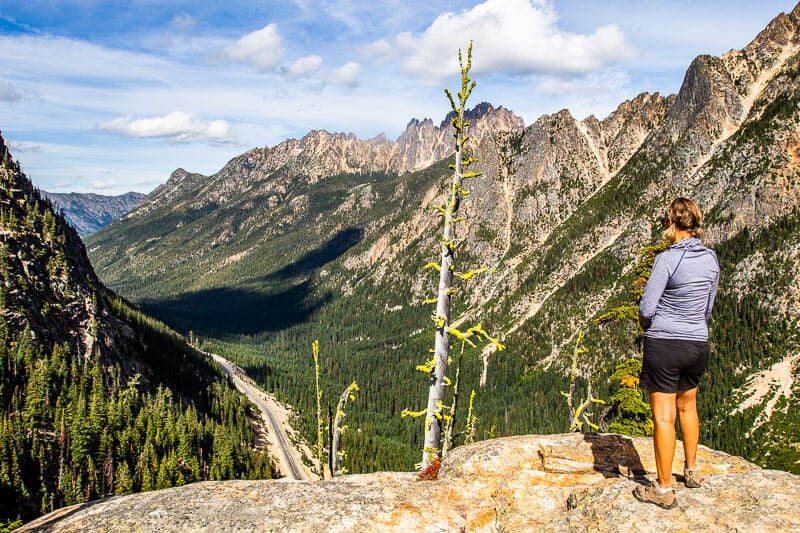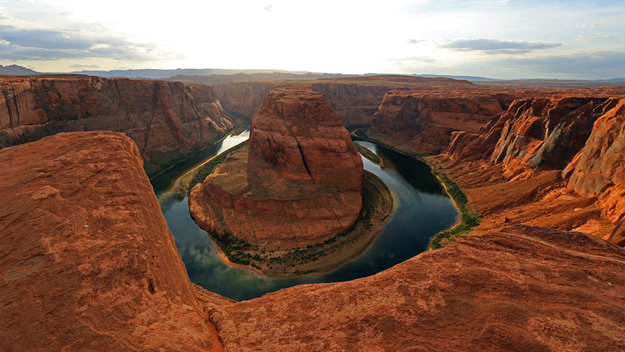The Untouched Beauty of America's Lesser-Known National Parks
America's national parks are treasures of natural beauty and biodiversity. While iconic destinations like Yellowstone, Yosemite, and the Grand Canyon receive millions of visitors annually, many lesser-known parks remain relatively unexplored.
These hidden gems offer stunning landscapes, unique ecosystems, and a tranquil escape from the bustling crowds.
This article explores the untouched beauty of some of America's lesser-known national parks, highlighting their unique features and the experiences they offer.
North Cascades National Park
 Located in the state of Washington, North Cascades National Park is a breathtaking wilderness area characterized by rugged mountain peaks, pristine alpine lakes, and dense forests. Often referred to as the "American Alps," this park is a haven for outdoor enthusiasts seeking solitude and adventure.
Located in the state of Washington, North Cascades National Park is a breathtaking wilderness area characterized by rugged mountain peaks, pristine alpine lakes, and dense forests. Often referred to as the "American Alps," this park is a haven for outdoor enthusiasts seeking solitude and adventure.
Unique Features
North Cascades is home to over 300 glaciers, more than any other park in the contiguous United States. The park's diverse ecosystems range from temperate rainforests to alpine meadows, supporting a rich variety of flora and fauna. Notable wildlife includes black bears, mountain goats, and the elusive gray wolf.
The park is also known for its strikingly blue lakes, such as Ross Lake and Diablo Lake, which owe their color to glacial silt suspended in the water. These lakes provide excellent opportunities for kayaking, fishing, and boating, surrounded by stunning mountainous backdrops.
Activities and Attractions
 Hiking is a primary activity in North Cascades, with over 400 miles of trails catering to all skill levels. Popular hikes include the Cascade Pass Trail, which offers panoramic views of jagged peaks and verdant valleys, and the more challenging Sahale Arm Trail, known for its breathtaking vistas and wildlife sightings.
Hiking is a primary activity in North Cascades, with over 400 miles of trails catering to all skill levels. Popular hikes include the Cascade Pass Trail, which offers panoramic views of jagged peaks and verdant valleys, and the more challenging Sahale Arm Trail, known for its breathtaking vistas and wildlife sightings.
For those interested in camping, the park offers several campgrounds, including the remote and serene Hozomeen Campground near the Canadian border. Backpacking enthusiasts can explore the park's vast wilderness areas, where they can truly immerse themselves in nature's tranquility.
Great Basin National Park
 Nestled in eastern Nevada, Great Basin National Park is a hidden gem known for its striking contrasts, from the ancient bristlecone pine trees to the subterranean wonders of Lehman Caves. This park offers a diverse range of experiences, from stargazing under some of the darkest skies in the country to exploring unique geological formations.
Nestled in eastern Nevada, Great Basin National Park is a hidden gem known for its striking contrasts, from the ancient bristlecone pine trees to the subterranean wonders of Lehman Caves. This park offers a diverse range of experiences, from stargazing under some of the darkest skies in the country to exploring unique geological formations.
Unique Features
Great Basin is home to Wheeler Peak, the second-highest mountain in Nevada, standing at 13,063 feet. The peak's high-altitude environment supports alpine plants and animals not found elsewhere in the region. The park is also renowned for its groves of bristlecone pines, some of the oldest living trees on Earth, with ages exceeding 4,000 years.
Lehman Caves, a limestone cave system discovered in the 1880s, offers a fascinating subterranean experience. Visitors can explore the cave's intricate formations, including stalactites, stalagmites, and rare shield formations, on guided tours that delve into its geological and historical significance.
Activities and Attractions
Hiking trails in Great Basin range from short, accessible walks to challenging backcountry routes. The Bristlecone Pine Trail leads to ancient groves high on Wheeler Peak, offering insights into the longevity and resilience of these remarkable trees. The Alpine Lakes Loop Trail provides a scenic route around Stella and Teresa Lakes, with stunning views of Wheeler Peak.
Great Basin is also a designated International Dark Sky Park, making it a premier destination for stargazing. The park's remote location and high elevation provide exceptionally clear night skies, where visitors can observe celestial phenomena and participate in ranger-led astronomy programs.
Congaree National Park
 Situated in South Carolina, Congaree National Park is a unique destination known for its extensive floodplain forest, towering hardwoods, and rich biodiversity. As one of the most biologically diverse national parks in the United States, Congaree offers a fascinating glimpse into a largely undisturbed ecosystem.
Situated in South Carolina, Congaree National Park is a unique destination known for its extensive floodplain forest, towering hardwoods, and rich biodiversity. As one of the most biologically diverse national parks in the United States, Congaree offers a fascinating glimpse into a largely undisturbed ecosystem.
Unique Features
Congaree's old-growth bottomland hardwood forest is one of the largest remaining in North America. The park's unique hydrology results in seasonal flooding that nurtures a diverse array of plant and animal species. Noteworthy flora includes towering bald cypress and water tupelo trees, some of which are among the tallest in the eastern United States.
The park is also a haven for birdwatchers, with over 200 species recorded. Visitors may spot a variety of birds, including the colorful prothonotary warbler and the elusive Swainson's warbler. The park's waterways are home to diverse fish species, amphibians, and reptiles, including the American alligator.
Activities and Attractions
Exploring Congaree can be done via its extensive network of boardwalks and hiking trails. The Boardwalk Loop Trail offers an accessible and immersive experience through the heart of the floodplain forest, while longer trails like the Weston Lake Loop provide opportunities to delve deeper into the park's wilderness.
Canoeing and kayaking on Cedar Creek offer a unique perspective of Congaree's waterways and wildlife. Guided canoe tours are available, providing educational insights into the park's ecology and history. Fishing is also a popular activity, with opportunities to catch species such as largemouth bass and catfish.
Big Bend National Park
 Located in West Texas, Big Bend National Park is a vast and remote wilderness area known for its dramatic desert landscapes, diverse ecosystems, and rich cultural history. The park encompasses the Chisos Mountains, the Chihuahuan Desert, and the Rio Grande, offering a wide range of outdoor activities and natural wonders.
Located in West Texas, Big Bend National Park is a vast and remote wilderness area known for its dramatic desert landscapes, diverse ecosystems, and rich cultural history. The park encompasses the Chisos Mountains, the Chihuahuan Desert, and the Rio Grande, offering a wide range of outdoor activities and natural wonders.
Unique Features
Big Bend's geological diversity is one of its most striking features. The Chisos Mountains rise dramatically from the desert floor, providing a cool, forested refuge amidst the arid landscape. The Rio Grande carves deep canyons, such as Santa Elena Canyon, creating stunning vistas and opportunities for water-based recreation.
The park's flora and fauna are equally diverse, with over 1,200 plant species and numerous animal species, including javelinas, roadrunners, and the endangered Mexican black bear. The varied habitats, from desert scrub to mountain woodlands, support a rich array of wildlife.
Activities and Attractions
Hiking in Big Bend offers a range of experiences, from short nature walks to challenging mountain treks. The Lost Mine Trail and the Window Trail are popular choices, providing breathtaking views and opportunities to explore the park's unique geology and ecology. For a more challenging adventure, the South Rim Trail offers panoramic vistas from the high Chisos Mountains.
River activities on the Rio Grande include canoeing, kayaking, and rafting, with guided trips available for those seeking to navigate the park's spectacular canyons. Big Bend is also known for its dark skies, making it an excellent destination for stargazing and astrophotography.
Conclusion
America's lesser-known national parks offer a wealth of natural beauty and unique experiences, away from the crowds that often flock to more famous destinations. North Cascades, Great Basin, Congaree, and Big Bend each provide their own distinct landscapes and ecosystems, inviting visitors to explore and appreciate the untouched splendor of these hidden gems. By venturing off the beaten path, one can discover the true essence of
America's natural heritage, fostering a deeper connection to the environment and a greater appreciation for the country's diverse and pristine wilderness areas.




































